Themed collection Editors' collection: Physical Chemistry of Colloids and Interfaces

Subtle chemical modification for enrichment of Fmoc-amino acid at a phospholipid interface
A modest chemical modification of the Fmoc-amino acids led to enhanced interaction with a model surface for biomembrane.

RSC Adv., 2019,9, 37188-37194
https://doi.org/10.1039/C9RA03896E
Exploring the water/oil/water interface of phospholipid stabilized double emulsions by micro-focusing synchrotron SAXS
Surfactant stabilized water/oil/water (w/o/w) double emulsions have received much attention in the last years motivated by their wide applications.
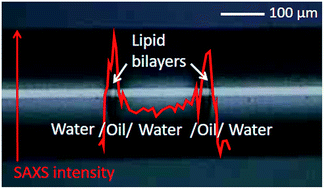
RSC Adv., 2019,9, 33429-33435
https://doi.org/10.1039/C9RA05894J
Monolayer formed by L-Asp-based gemini surfactants self-assembled in 1D nanostructures
L-Asp-based gemini surfactants form primary fibrils (1D structure) that interact with each other and arrange in a film (2D structure).
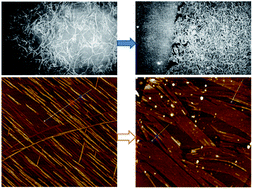
RSC Adv., 2019,9, 33071-33079
https://doi.org/10.1039/C9RA06390K
Green and sustainable zero-waste conversion of water hyacinth (Eichhornia crassipes) into superior magnetic carbon composite adsorbents and supercapacitor electrodes
Our facile approach converts embarrassing weed to value-added products through environmentally friendly routes towards zero-waste scheme.
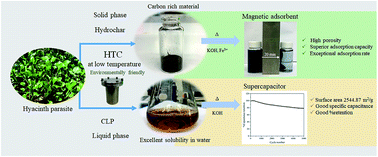
RSC Adv., 2019,9, 24248-24258
https://doi.org/10.1039/C9RA03873F
Novel biodegradable and non-fouling systems for controlled-release based on poly(ε-caprolactone)/Quercetin blends and biomimetic bacterial S-layer coatings
S-Layer coating on PCL–Quercetin miscible blends acts as a release controller from films and scaffolds, as well as antifouling agent.
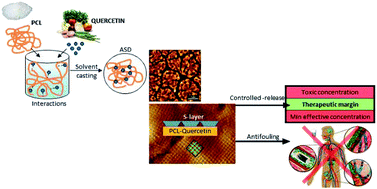
RSC Adv., 2019,9, 24154-24163
https://doi.org/10.1039/C9RA04398E
Expanding the limits of amide–triazole isosteric substitution in bisamide-based physical gels
Dual amide–triazole isosteric substitution in a bis-amide gelator allows fine-tuning of the properties of the corresponding supramolecular gels.
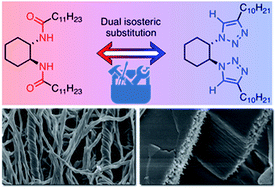
RSC Adv., 2019,9, 20841-20851
https://doi.org/10.1039/C9RA03316E
Temperature-triggered reversible breakdown of polymer-stabilized olive–silicone oil Janus emulsions
A one-step moderate energy vibrational emulsification method was successfully employed to produce thermo-responsive olive/silicone-based Janus emulsions stabilized by poly(N,N-diethylacrylamide) carrying 0.7 mol% oleoyl side chains.

RSC Adv., 2019,9, 19271-19277
https://doi.org/10.1039/C9RA03463C
Zinc oxide nanocrystals as a nanoantibiotic and osteoinductive agent
Nanomaterials for bone tissue engineering are developing to new solutions against infections, antibiotic resistance, promotion of new bone. ZnO nanocrystals are promising candidates with intrinsic antimicrobial activity and high biocompatibility.
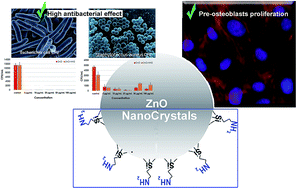
RSC Adv., 2019,9, 11312-11321
https://doi.org/10.1039/C8RA10236H
Vanillin decorated chitosan as electrode material for sustainable energy storage
To replace dangerous and rare components in battery electrodes, more sustainable energy storage materials made from biowaste and wood-based vanillin are presented.

RSC Adv., 2019,9, 4591-4598
https://doi.org/10.1039/C9RA00140A
Gold nanoparticle coatings as efficient adenovirus carriers to non-infectable stem cells
Assessment of the differences of the levels of gene expression achieved in non-infectable MSCs, by the completion of recombinant adenoviruses together with different NPs combinations (gold NPs or a commercially available polyethylenimine derivative).
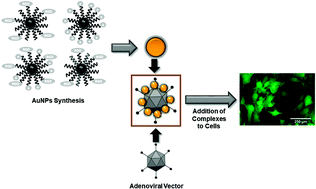
RSC Adv., 2019,9, 1327-1334
https://doi.org/10.1039/C8RA09088B
Incorporation of potassium halides in the mechanosynthesis of inorganic perovskites: feasibility and limitations of ion-replacement and trap passivation
Potassium halides are used for cation-exchange, anion-exchange and trap passivation of mechanosynthesized perovskites.
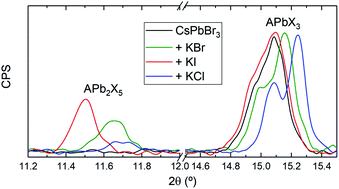
RSC Adv., 2018,8, 41548-41551
https://doi.org/10.1039/C8RA08823C
Effect of low-temperature plasma treatment of electrospun polycaprolactone fibrous scaffolds on calcium carbonate mineralisation
This article reports on a study of the mineralisation behaviour of CaCO3 deposited on electrospun poly(ε-caprolactone) (PCL) scaffolds preliminarily treated with low-temperature plasma.

RSC Adv., 2018,8, 39106-39114
https://doi.org/10.1039/C8RA07386D
Towards sustainable diagnostics: replacing unstable H2O2 by photoactive TiO2 in testing systems for visible and tangible diagnostics for use by blind people
Blind and color blind people cannot afford colorimetric diagnostics; the problem is especially severe in rural areas where high temperatures and the absence of electricity challenge modern diagnostics.
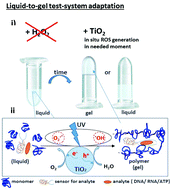
RSC Adv., 2018,8, 37735-37739
https://doi.org/10.1039/C8RA06711B
Infiltration of biomineral templates for nanostructured polypyrrole
The insufficient infiltration of pyrrole into the CaCO3 structure of biomineral templates was improved using three universally applicable approaches.
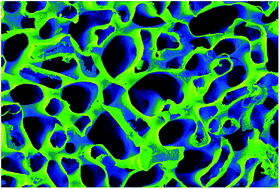
RSC Adv., 2018,8, 33748-33752
https://doi.org/10.1039/C8RA07805J
Towards potent but less toxic nanopharmaceuticals – lipoic acid bioconjugates of ultrasmall gold nanoparticles with an anticancer drug and addressing unit
Modification of ultrasmall gold nanoparticles (AuNPs) with the lipoic acid derivative of folic acid was found to enhance their accumulation in the cancer cell, as compared to AuNPs without addressing units.
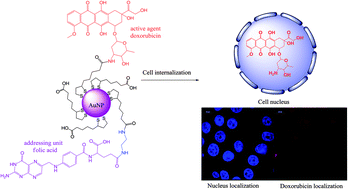
RSC Adv., 2018,8, 14947-14957
https://doi.org/10.1039/C8RA01107A
Characterization of aluminum, aluminum oxide and titanium dioxide nanomaterials using a combination of methods for particle surface and size analysis
The application of appropriate analytical techniques is essential for nanomaterial (NM) characterization.
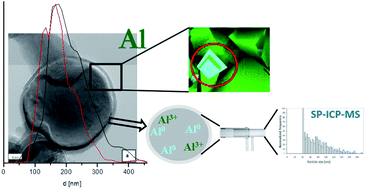
RSC Adv., 2018,8, 14377-14388
https://doi.org/10.1039/C8RA00205C
Unveiling and tackling guanidinium peptide coupling reagent side reactions towards the development of peptide-drug conjugates
Discovery of uncharted guanidinium peptide coupling reagent side reactions during peptide-drug conjugates synthesis.
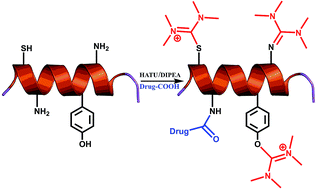
RSC Adv., 2017,7, 50519-50526
https://doi.org/10.1039/C7RA06655D
Amphiphilic acrylamide block copolymer: RAFT block copolymerization and monolayer behaviour
Amphiphilic acrylamide block copolymer, synthesized by RAFT polymerization, takes a stable monolayer formation with phase-separated structures at the air–water interface.
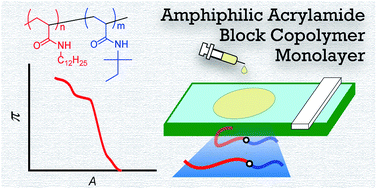
RSC Adv., 2017,7, 44954-44960
https://doi.org/10.1039/C7RA06788G
Adsorption characteristics of Cytochrome c/DNA complex Langmuir molecular assemblies at the air–water interface: a surface area-normalized isotherm study
We present the formation of a complex molecular network consisting of highly water soluble λ-DNA and a redox protein, Cytochrome c (Cyt c), at the air–water interface by Langmuir–Blodgett technique.
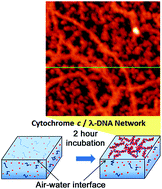
RSC Adv., 2017,7, 37755-37764
https://doi.org/10.1039/C7RA05118B
Molecular-level insight into the binding of arginine to a zwitterionic Langmuir monolayer
Arginine molecules bind to a DPPC monolayer, altering the interfacial electrostatic potential and the lateral mobility of the lipids, while having little effect on the compression isotherm of the monolayer.
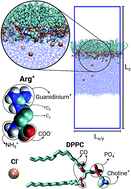
RSC Adv., 2017,7, 30862-30869
https://doi.org/10.1039/C7RA05359B
Rapid preparation of block copolymer templated mesoporous Zr1−xCexO2 thin films
A rapid deposition method for the preparation of ordered mesoporous Zr1−xCexO2 thin films using commercial templates is developed, with a comprehensive study on the relationship between synthesis conditions and the properties of the resulting films.
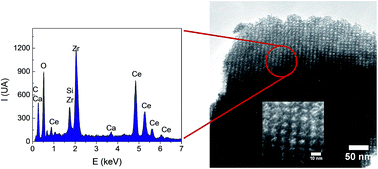
RSC Adv., 2017,7, 26746-26755
https://doi.org/10.1039/C7RA03647G
Self-assembling characteristics of amphiphilic zwitterionic brush random copolymers at the air–water interface
Amphiphilic zwitterionic brush random copolymers bearing sulfobetaine groups at the bristle ends underwent segregation at the air–water interface, always forming only the Langmuir monolayer structure rather than any other structures.
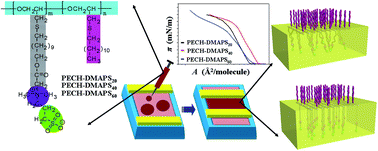
RSC Adv., 2017,7, 11813-11820
https://doi.org/10.1039/C6RA28828F
Unveiling the interaction of DNA–octadecylamine at the air–water interface by ultraviolet-visible reflection spectroscopy
In this work, ultraviolet-visible reflection spectroscopy is proposed as a technique that, in combination with classical surface pressure–area isotherms, allows to study in situ the adsorption of DNA to octadecylamine monolayers.
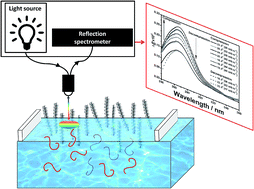
RSC Adv., 2017,7, 5872-5879
https://doi.org/10.1039/C6RA27903A
New post-processing method of preparing nanofibrous SERS substrates with a high density of silver nanoparticles
The protocol to control density of AgNP on surfaces of nanofibers, and thus electromagnetic hotspots by variation of Tollens' reagent is established. Nanofiber films enable SERS either of solutes or macromolecular structures such as bacterial cells.

RSC Adv., 2016,6, 84505-84511
https://doi.org/10.1039/C6RA18636J
Role of counter-ion and helper lipid content in the design and properties of nanocarrier systems: a biophysical study in 2D and 3D lipid assemblies
This study validates a model for DODAX : MO assemblies highlighting the role of counter-ion and MO content in their biophysical properties.
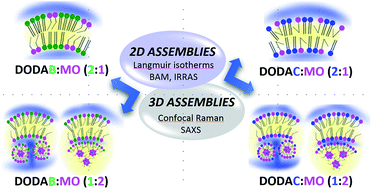
RSC Adv., 2016,6, 47730-47740
https://doi.org/10.1039/C6RA08125H
About this collection
Guest-edited by RSC Advances Associate Editor Juan J. Giner-Casares, this collection features exciting research with the core in physical chemistry of interfaces, illustrating a vibrant field that in itself produces stimulating research.
The physical chemistry of colloids and interfaces is enjoying a fruitful interaction with a vast number of fields; joint ventures with the biomedical discipline constitute undoubtedly a prominent topic, in which chemical and biomedical researchers highly benefit from each other. There are also many other subjects that profit from interactions with physical chemistry.